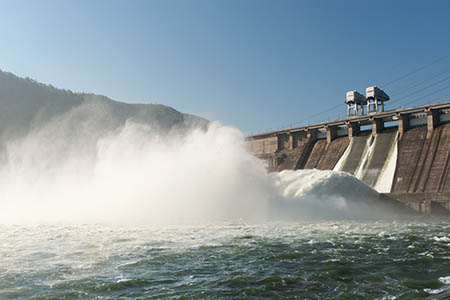Uganda solicita a China expertos para estudiar redes eléctricas
Fuente: Daily Monitor
The government has invited China Electric Power Equipment and Technology Company Limited (CET) to assess Uganda’s electricity transmission and distribution grids.
CET’s findings will inform future investments (projects) in the networks, which are currently operated by the Uganda Electricity Transmission Company Limited (UETCL) and Umeme respectively.
The invite follows CET’s June 1 expression of interest to invest $3 billion (Shs11.2 trillion) in the systems to reduce technical losses and improve reliability of power supply.
Uganda’s Energy ministry rose to the bait; it met on August 8 at the ministry’s head office in Kampala to discuss CET.
On August 14, Cecilia M. Nakiranda Menya, on behalf of the Energy ministry’s Permanent Secretary, Robert Kasande, wrote to CET’s General Manager, Africa region.
“This is, therefore, to request [CET] to dispatch a technical team for further analysis of the network[s] and project development,” Ms Menya wrote.
When Daily Monitor contacted Mr Kasande on October 12 to explain what analysing the grids will entail, he asked how this newspaper ended up with a copy of the letter.
He suggested this reporter meets him on October 15 in his office on Amber House so that he could ‘look at the letter’.
On October 15, Mr Kasande gave the reporter a runaround.
An engineer in the ministry, who is, however, not authorised to speak for the entity, later explained to Daily Monitor that analysing the grids could mean any or all of the three aspects hereunder.
One, it could involve the study of load (demand) growth especially that of users like industries that consume larger volumes of power.
This would encompass looking at power generation and demand to inform decisions on how to calibrate supply (generation).
For instance, during the peak hours (6pm to midnight) more power is generated because that is when more is consumed.
In comparison, less is supplied during the shoulder hours – 6am to 6pm. If supply exceeds the load it could distabilise the grids.
Two, the analysis would look at the age of the assets like towers, poles, transformers and substation parts, among others, to establish their suitability.
Three, it would consider the protections in place to mitigate faults along the line.
This is information CET can get from the Uganda Electricity Transmission Company Limited (UETCL), Uganda Electricity Distribution Company Limited (UEDCL) and Umeme.
Indeed, through the August 14 letter, the ministry proposed that CET should meet UEDCL and UETCL to get more information about the Ugandan power networks.
When this newspaper asked Mr William Kiryahika, the chief executive officer of UETCL, if UETCL and CET had met, he said, “No.”
Asked if he is aware of CET’s interest in developing the transmission grid, he said, “We get many of such requests.”
“When they come, we advise them on the steps they should take to be allowed to [invest],” Mr Kiryahika said on October 12.
“If it is an EPC [EngineerIng, Procurement and Construction] and financing, which means they have the technical expertise and can get cheap sources of finance, there are a number of steps they have to go through...”
One of the steps is to engage the Electricity Regulatory Authority (ERA).
Mr Andrew Aja Baryayanga, who was one of the members of the House’s 2012 Ad hoc Committee on Energy, said since the Chinese are ready to invest in Uganda’s grids, ERA should set the terms and conditions for them.
“Once you tell them what the price of each unit should be, CET will make sure there are many people accessing electricity so that they can recoup their investment faster,” Mr Baryayanga said.
“The more households or businesses are connected to the grids, the lesser burden on consumers since the installments of the principal to be recovered annually will be spread among many consumers.”
Mr Baryayanga, who is also the Member of Parliament of Kabale Municipality, said the Chinese have ‘deep pockets’ and have shown willingness to finance projects here.
An article titled, ‘China eyes role as world’s power supplier’, which appeared in the United Kingdom’s Financial Times on June 7, 2018 is more instructive in explaining CET’s interest in Uganda.
According to the kicker of the article, China is promoting a global electricity network to absorb huge power surpluses.
To that end, to justify the construction of huge electricity generation projects, China’s State Grid Corporation is pushing for Ultra-High Voltage (UHV) cable technology.
The UHV technology, according to the article, eases the commercial transportation of power over vast distances at lower costs and lowers technical losses.
Involvement elsewhere
Elsewhere in Africa, State Grid will be involved in building Mozambique’s grid backbone, linking it up with the Southern Africa Power Pool, a regional grid.
In the case of Uganda, where China’s Sinohydro and China Water and Electric Corporation are constructing the 600-MegaWatt (MW) Karuma hydropower plant and the 183MW Isimba hydropower projects, respectively.
Other Chinese companies will construct Ayago (840MW) and Kiba (288MW), CET is aware that Uganda’s power supply glut will increase given the pace at which power is being consumed.
In its proposal, CET hinted on the possibility of upgrading Uganda’s power networks to ease the export of power to the region. This is expected to address concerns about surplus electricity and technical losses associated with wheeling power over long distances.










 Contacto
Contacto Favoritos
Favoritos Email
Email
